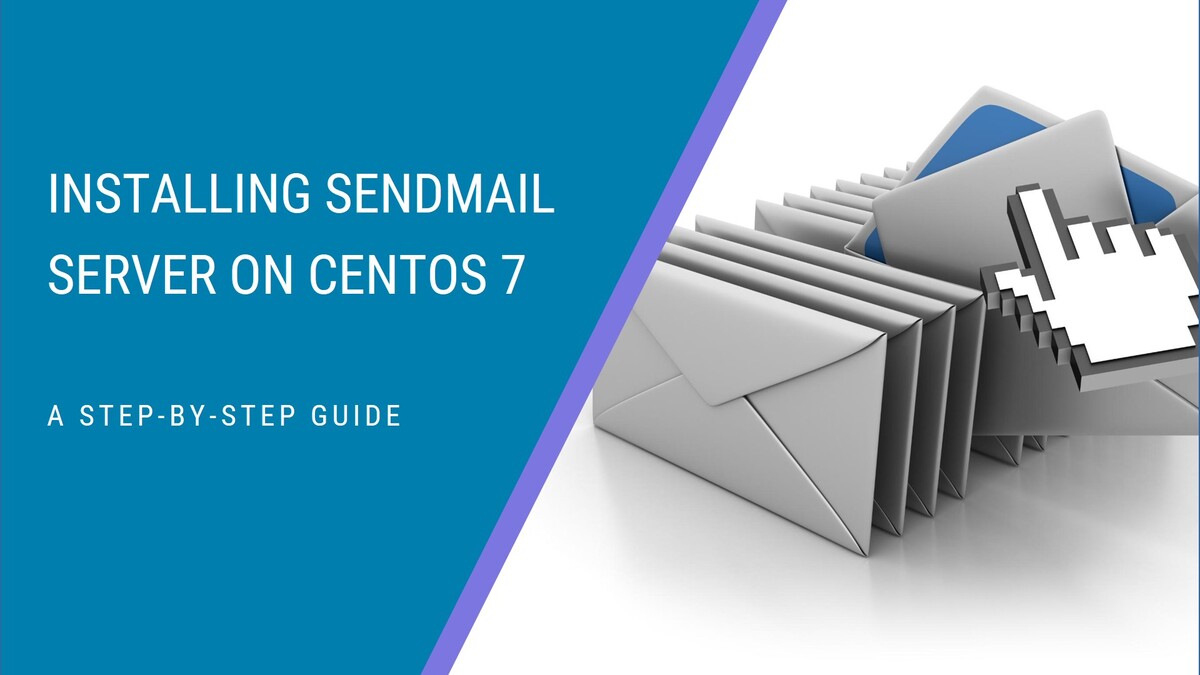
Sendmail is a widely used mail transfer agent (MTA) that utilizes SMTP for sending and routing emails. This step-by-step guide covers installing and configuring Sendmail from scratch on CentOS 7 Linux servers.
An Overview of Sendmail
Before diving into the installation, let’s briefly understand what Sendmail is and why many still choose to use it:
- Sendmail is an open-source MTA developed by Eric Allman for delivering email on UNIX-like systems.
- It handles routing SMTP mail flows reliably and securely between senders, recipients, and other MTAs.
- Sendmail interoperates well with various programs and web apps via SMTP/APIs.
- It powers delivering high volumes of email for companies worldwide due to flexibility meeting diverse needs.
- Robust configuration controls are available for security, optimization, integrations, etc.
While alternative MTAs like Postfix, Exim, and qmail exist, Sendmail remains a mature, trusted option for mail services.
Prerequisites for Installing Sendmail on CentOS 7
Before installing Sendmail, some requirements must be met:
- Access as root or user with sudo privileges
- Active subscription RHEL or CentOS version 7
- Network interface configured with static IP address
- Port 25 open on firewall for SMTP
- Fully qualified domain name (FQDN) assigned
- Correct DNS records pointing to server’s IP
Verifying these prerequisites are met will ensure Sendmail functions properly post-install.
Step 1 – Add the EPEL Repository
The Extra Packages for Enterprise Linux (EPEL) repository contains additional packages for CentOS, including Sendmail.
To add EPEL repos:
Copy code
sudo yum install epel-releaseStep 2 – Install Sendmail and Dependencies
Now install Sendmail, configuration files, and required components using yum:
Copy code
sudo yum install sendmail sendmail-cf m4sendmail – Primary Sendmail package
sendmail-cf – Config files
m4 – Macro processor to compile configs
Copy code
Transaction Summary ================================================= Install 3 packages Total download size: 1.2 M Installed size: 3.1 MAlternatively verify with:
Copy code
rpm -qa | grep sendmailStep 3 – Configure Sendmail
Edit /etc/mail/sendmail.mc to configure settings and options:
Copy code
vim /etc/mail/sendmail.mcExample edits:
Copy code
define(`SMART_HOST', `smtp.gmail.com')dnl define(`RELAY_MAILER_ARGS', `TCP $h 587')dnl define(`ESMTP_MAILER_ARGS', `TCP $h 587')dnl TRUST_AUTH_MECH(`EXTERNAL DIGEST-MD5 CRAM-MD5 LOGIN PLAIN')dnl FEATURE(`authinfo', `hash /etc/mail/auth/client-info.db')dnl DAEMON_OPTIONS(`Port=submission, Name=MSA, M=Ea')dnl MASQUERADE_AS(`mydomain.com')dnlSave changes after setting desired options.
Step 4 – Create Authentication Directory
Make this directory to store authentication details:
Copy code
sudo mkdir /etc/mail/authAdd a hash database file with usernames/passwords:
Copy code
vim /etc/mail/auth/client-info AuthInfo:gmail.com "U:username" "P:password" "M:PLAIN" makemap hash client-info.db < client-infoAlso configure /etc/mail/access adding allowed relays.
Step 5 – Recompile Configuration
Compile sendmail.mc to generate updated sendmail.cf:
Copy code
sudo m4 /etc/mail/sendmail.mc > /etc/mail/sendmail.cfOr use make:
Copy code
sudo make -C /etc/mailStep 6 – Start Sendmail Service
Launch the Sendmail service and enable on reboot:
Copy code
sudo systemctl start sendmail sudo systemctl enable sendmailStep 7 – Test Configuration
Send a test email to confirm routes correctly:
Copy code
sendmail -v [email protected]Check status with:
Copy code
systemctl status sendmailTroubleshooting Issues
Some common errors like host lookups and authentication failures can occur.
Double check DNS records match server IP address. Also verify client-info DB aligned with provided credentials if relay access problems seen.
Optimizing & Customizing Sendmail
Further Sendmail enhancements possible:
- Fine-tune performance limits for high loads
- Enable TLS encryption communications
- Configure multiple virtual domains
- Custom firewall rules
- Advanced antispam/antivirus scanning
- API integration with web languages
And more!
Conclusion
Properly installing and hardening Sendmail prepares mail servers for securely delivering high volumes of email.
While the initial setup process may seem complex, once configured, Sendmail serves as a robust, efficient MTA for enterprise needs.
For assistance with expertly hosting and supporting production Sendmail servers, hosting providers like VpsWala offer fully managed solutions. Our team helps handle everything from configuration to optimization and routine maintenance for peak email performance.
